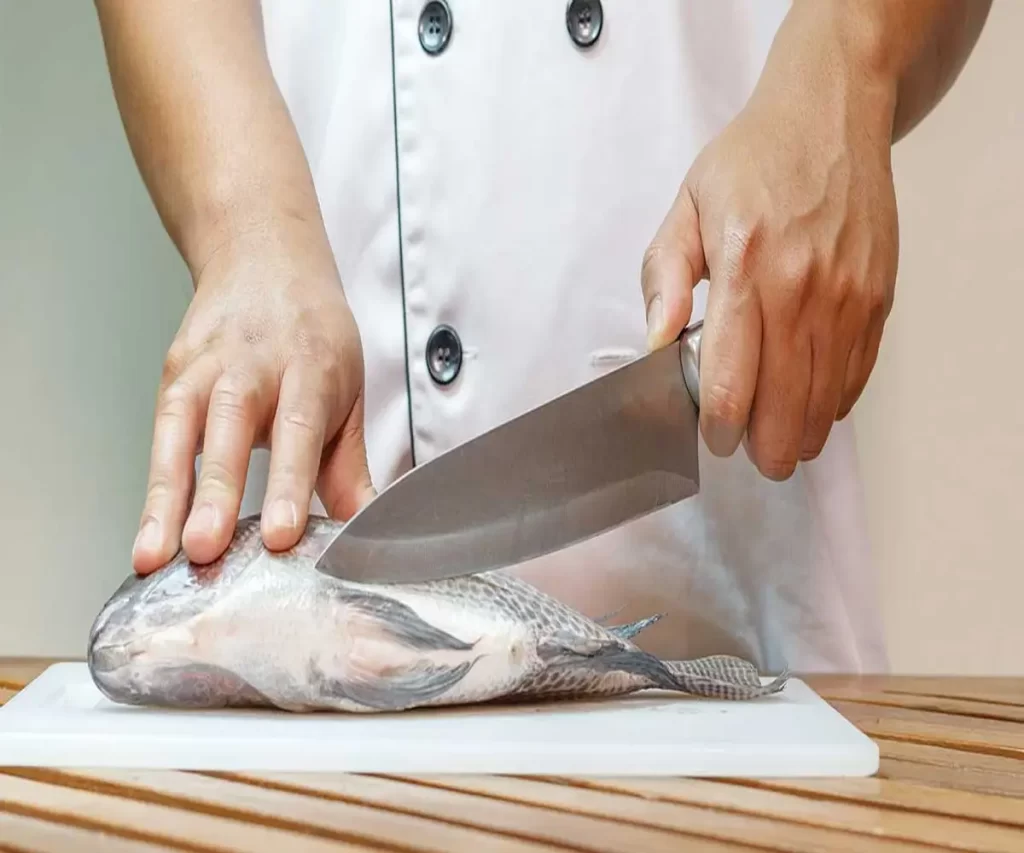
Learning How to Fillet a Fish
Fillet a fish might seem like a daunting task for many, but with the right techniques and a bit of practice, it can become a rewarding skill that enhances your culinary repertoire. Whether you’re an angler looking to prepare your catch or a home cook eager to explore the world of seafood, this comprehensive guide will walk you through the step-by-step process of filleting a fish. From selecting the right tools to mastering the intricate cuts, you’ll soon be able to transform a whole fish into perfect fillets.
Getting Started
Tools and Equipment
Before you embark on the filleting journey, gather the essential tools:
- Sharp Fillet Knife: Invest in a high-quality, flexible fillet knife. The flexibility allows for better control and precision.
- Cutting Board: Choose a stable, non-slip surface. Some prefer boards with a groove to catch juices.
- Fish Tweezers or Pliers: These come in handy for removing small bones.
- Gloves: Optional, but they can provide a better grip and protect your hands.
- Fish Scaler: If your fish has scales, a scaler helps remove them efficiently.
Choosing the Right Fish
Different fish species require different approaches to filleting. Some common choices for beginners include:
- Trout: Known for its tender flesh, making it easier to fillet.
- Salmon: With large fillets and distinct muscle structure, it’s great for practice.
- Bass: A popular choice for anglers, offering a good balance between size and ease of filleting.
Preparing the Workstation
Clean and Scale the Fish
If your fish still has scales, use a fish scaler to remove them. Rinse the fish under cold water and pat it dry with paper towels. A clean fish is easier to handle and ensures a more hygienic filleting process.
Securing the Fish
Place the fish on the cutting board with its belly facing you. To prevent slipping, make a small incision just behind the pectoral fin and insert the tip of the knife to anchor the fish.
Orientation Matters
Identify the head and tail of the fish. Most filleting techniques involve cutting from head to tail, but some fish, like flatfish, require a different approach.
The Filleting Process
Starting the Cut
Make a shallow incision behind the fish’s gills, angling the knife slightly towards the head. This initial cut helps guide the knife along the spine.
Following the Backbone
With the tip of the knife against the spine, gently slide it along the backbone, feeling the bones to ensure a clean cut. Use smooth, controlled motions to avoid tearing the flesh.
Removing the Fillet
As you reach the ribcage, angle the knife slightly downward to follow the contours. Lift the fillet periodically to check for any remaining bones.
Repeat on the Other Side
Flip the fish and repeat the process on the other side. The goal is to leave as little flesh on the bones as possible.
Deboning and Skin Removal
Deboning the Fillet
Run your fingers along the fillet to detect any pin bones. Use fish tweezers or pliers to gently pull them out.
Skin Removal
If you prefer skinless fillets, place the fillet skin-side down on the cutting board. Insert the knife between the flesh and the skin at a slight angle. Hold the tail firmly and wiggle the knife to separate the skin from the flesh.
Tips and Tricks for Success
Keep it Cold
Work with cold fish. This not only ensures better handling but also helps maintain the integrity of the flesh.
Maintain a Sharp Knife
A sharp knife is essential for clean cuts. Hone the blade regularly and sharpen it when needed.
Practice Patience
Filleting is a skill that improves with practice. Take your time and focus on precision rather than speed.
Cooking with Your Fillets
Storage
If not using the fillets immediately, store them in the refrigerator. Consider vacuum-sealing for longer freshness.
Recipe Ideas
Experiment with various cooking methods such as grilling, baking, or pan-searing. Consider classic recipes like lemon-butter baked fish or a simple grilled fillet with herbs.
Troubleshooting Common Issues
Leftover Bones
If you notice small bones after filleting, use a clean, damp cloth to wipe them away.
Uneven Fillets
Practice and experience will help improve the uniformity of your fillets. Take note of any unevenness and adjust your technique accordingly.
Congratulations! You’ve now mastered the art of filleting a fish. From selecting the right tools to navigating the intricate cuts, this guide has equipped you with the knowledge to turn a whole fish into beautiful, boneless fillets. As with any skill, practice is key, so don’t be discouraged by initial challenges. Soon, you’ll be filleting with confidence and enjoying the fruits of your labor in the kitchen. Happy filleting!